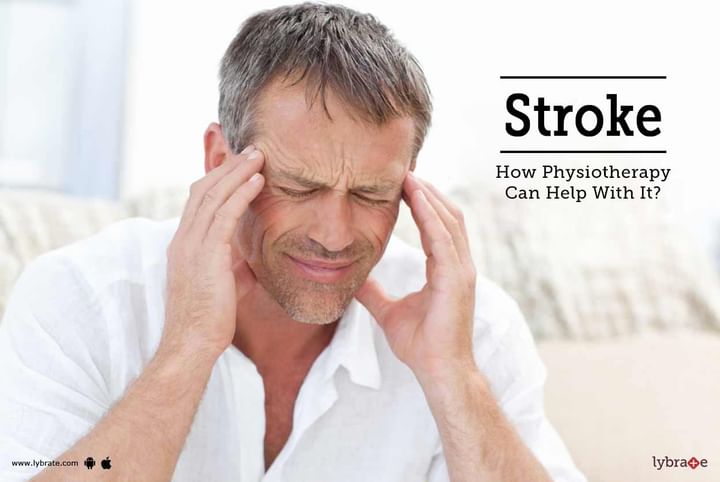Stroke - How Physiotherapy Can Help With It?
Stroke is a medical condition in which the flow of blood towards the brain is poor and causes the death of certain cells. There are two common types of stroke:
1. Ischemic- due to lack of blood flow
2. Hemorrhagic- due to bleeding
Signs and symptoms of stroke
- Problems with movement
- Inability to feel on one side of the body
- Problems understanding or in speech
- Vertigo
- Loss of vision
- Difficulty in carrying out everyday activities
Role of Physiotherapy for Patients with Stroke
- The main focus of physiotherapy is to help you use your arms and legs to regain as much strength and movement as possible.
- If you have one-sided paralysis, correct positioning is important to prevent spasm or injury.
- It helps you to sit up as this will help you avoid blood clots in your legs, improve your breathing and help you recover quickly.
- If you are unable to move, you may be given chest physiotherapy to keep your lungs free of infection.
What does a Physiotherapist do?
- A physiotherapist advises you on how you should be positioned when lying or sitting, and how often you need to be moved.
- Motivates you to be actively involved in your physiotherapy sessions to help you relearn normal patterns of movement
- Decides when you should begin to start walking and what equipment is needed to move or support you
- Provides therapy to strengthen your limbs and teach you how to move again as independently as possible
- Takes care of the fact that no complications should arise and you have a smooth recovery.
Treatment Techniques:
- Strength Training: It is evident that strength training can improve upper-limb strength and function without increasing tone or pain in individuals with stroke.
- Gaming: Goal orientated computer gaming has proven to significantly reduce upper limb impairment in stroke survivors.
- Virtual Reality: Virtual reality training has been shown to be effective in restoring upper limb motor impairments and motor-related functional abilities.
- Mirror Therapy: Mirror therapy has been shown to have a beneficial effect on motor control and function compared to conventional therapy.
- Robot-Assisted Therapy: It has been shown to have a beneficial effect on motor recovery and function.
In the upper extremity with severe impairment and/or poor prognosis for recovery, Chedoke McMaster Stroke Assessment (CMSA) of Arm and Hand < Stage 4) treatment should focus on maintaining a comfortable, pain-free, mobile arm and hand. Engage in repetitive and intense use of novel tasks that challenge the stroke survivor to acquire necessary motor skills to use the involved upper limb during functional tasks and activities. Engage in motor-learning training including the use of imagery.
In case you have a concern or query you can always consult an expert & get answers to your questions!



+1.svg)
